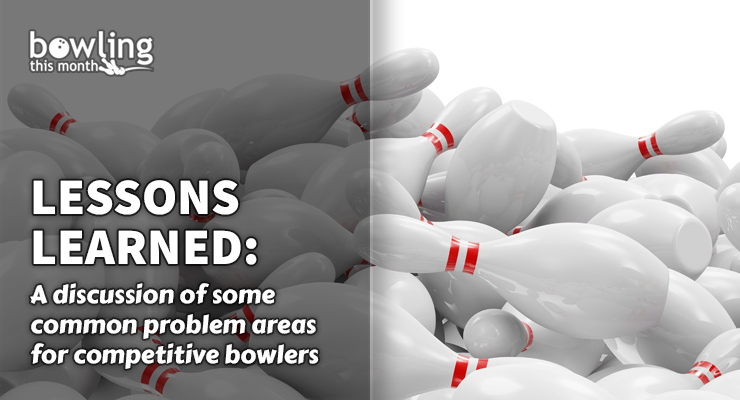Over the years, I’ve chosen to concentrate most of my efforts to help bowlers into the articles that I write. This year, however, because of the USBC Open Championships being held in Las Vegas where I live, I’ve had the opportunity to coach many bowlers from other parts of the country who have contacted me to schedule a lesson during their time in Vegas. It has been a very pleasurable as well as eye-opening experience.
The most fascinating thing for me about working with this very diverse group of bowlers is the consistency of the common elements that we addressed when I worked with them. It occurred to me that it might be beneficial for those bowlers who can’t get to Vegas to discuss these very common problem areas, so here goes.
I like to divide bowling skills into three categories: hand (physical game), heart (mental/emotional game), and head (intellectual game). The top bowlers in the world have reached very high skill levels in all three areas. I believe that no bowler can ever achieve elite status without excelling in all three of these areas.
While we won’t all reach elite status, the good news is that all of the bowlers with whom I’ve worked have proven themselves to be capable of improvement by identifying their area(s) of weakness and working to improve them.
Hand (the physical game)
Most bowlers who come to me for help want to focus on the physical game. They want to improve their rev rate, ball speed, armswing, etc.
Nearly every bowler I’ve worked with has failed to grasp the fact that modern bowling balls hook all by themselves with little help from the bowler. In fact, the more that a bowler tries to “make” the ball hook, the less it actually hooks. This translates into the need to simply roll the ball, rather than throw it. This one concept, depending on the individual bowler, can affect the release (always), the timing (most of the time), and the armswing (some of the time).
Starting with the release, most older bowlers are still trying to lift the ball and turn the ball. Lift and turn worked really well for Mark Roth in the 1970s and 1980s, but it is the bane of bowling with modern equipment. The difference in the release needed for modern bowling is ...
This article is only available to Bowling This Month subscribers. Click below to get instant access to this article and all of our other premium instructional content.
Subscribe to Bowling This Month
Already a Bowling This Month subscriber? Click here to log in.
Image Credits: Bowling pins image (©iStock.com/rasslava) is licensed for use by BTM and is the copyrighted property of its original creator.
